
Reducing Compressed Air Demand
August 21, 2024
Innovations in Industrial Air Compressors: What’s New in the Market?
September 4, 2024Want to Boost Your Plant’s Energy Efficiency? Start with Your Compressed Air System
Kaishan USA | August 28, 2024| Uncategorized

Your compressed air professional can help you get results faster. And start saving energy and money sooner.
It may seem strange to talk about compressed air as a major source of energy savings for most companies.
But it is. For good reason.
First, we’ve often found that the largest motor in most manufacturing plants is typically on an air compressor. Plus, it’s frequently one of the largest (if not the largest) energy consumers in a typical plant.
Those two facts alone make your compressed air system fertile ground for energy savings. And logically, one of the best places to turn to improve your overall energy efficiency.
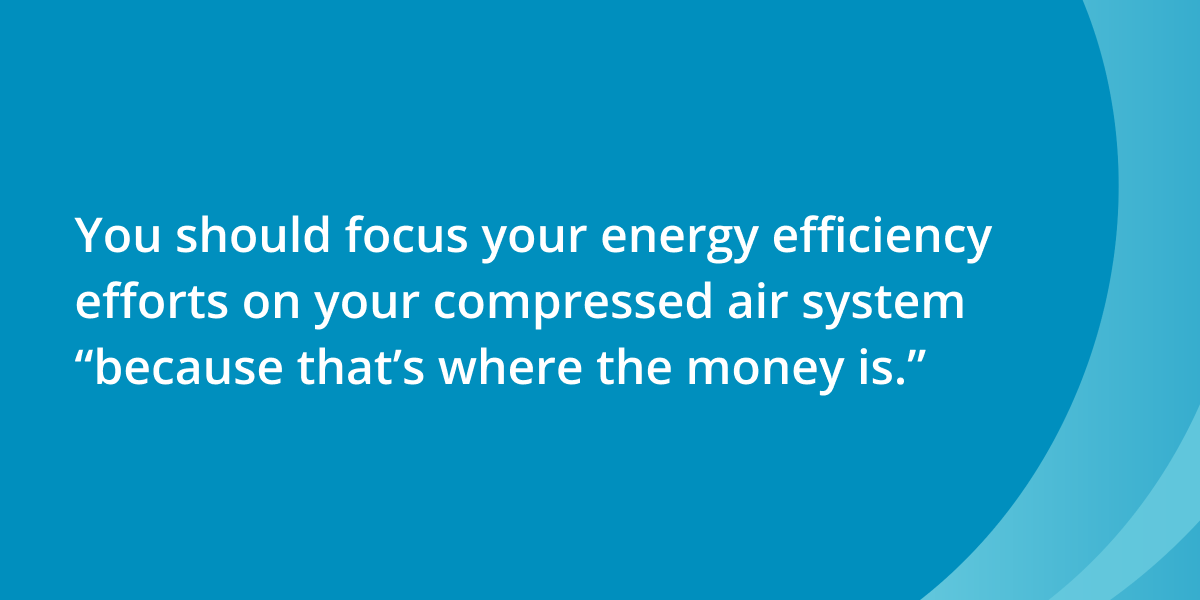
To paraphrase Willie Sutton’s famous explanation of why he robbed banks, you should focus your energy efficiency efforts on your compressed air system “because that’s where the money is.” (For his efforts, the Great Depression Era criminal was one of the first named to the FBI’s most wanted list.)
On top of all that, many energy-efficiency fixes for compressed air require little, if any, investment. So, those energy cost savings go right to the bottom line: if your company’s margins are, say, 2%, a savings of even $10,000 would work out the same as $500,000 in additional sales.
Here are five quick wins that will boost the energy efficiency of your compressed air system and your plant. Not to mention your bottom line.
Five Quick Wins
You can make demonstrable improvements in energy efficiency by following any or all of these five key steps.
Fix Leaks
Poorly designed and maintained compressed air systems waste up to $3.2 billion in utility payments in the U.S. annually, according to the Compressed Air & Gas Institute. CAGI further estimates that a quarter-inch leak in a 100-PSIG system will cost at least $17,000 annually. Perhaps more, depending on your local utility rates.
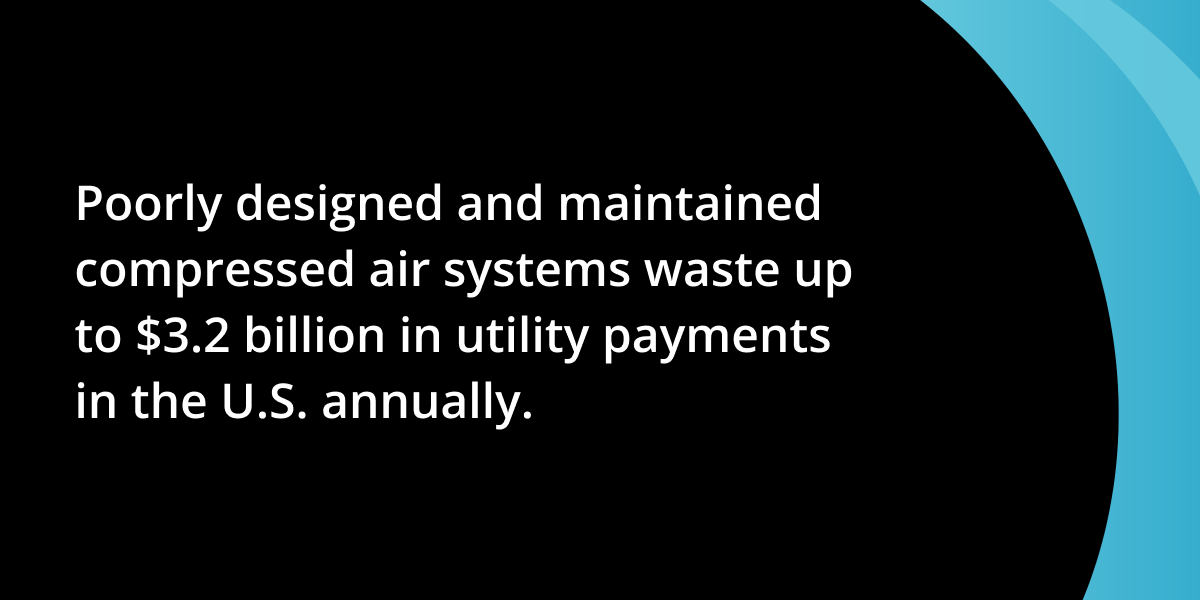
The good news is that some leaks are easy to locate because they emit a notorious, hard-to-ignore hissing sound. The bad news is that most don’t make any sound at all. In fact, 80% are inaudible.
Handheld leak detection devices have been available for some time and have been successful at helping companies locate leaks that are not in the audible range. Unfortunately, they also pick up signals from end-use tools or other ultrasonic emitters like cathode ray tubes, fan blades, pumps and vacuum pick-ups. That’s why the industry is turning to ultrasonic leak detection devices.
Ultrasonic leak detection systems use multiple directional microphones to triangulate the position of a leak source, overlaying the leak’s ultrasonic “signal” on a video image of your plant. Even more importantly, they can calculate the leak volume as well as the potential savings you can achieve by fixing it. If the leak is in a pipe 30 feet above the plant floor, for example, the system will provide a cost estimate of the annual savings. Then you can decide whether it is worth worrying about. Specifically, whether it’s worth putting up scaffolding or bringing in a lift.
The device can then do a printout you can give to your maintenance people, enabling them to find and fix the leak.
Unfortunately, few companies have the resources to purchase the latest technology or the need to train staff in its use. Ultrasonic leak detection devices are well beyond the scope of most facility maintenance teams. That’s why we recommend that our customers establish a relationship with a local compressed air professional with the most up-to-date equipment and experience in identifying and quantifying air leaks.
For more on leaks, read our blog post, “Eight Causes of Compressed Air Leaks and How to Find Them.”
Choose the Right Compressor
There are many different kinds of air compressors, but most industrial facilities use one of three main types: reciprocating, centrifugal or rotary screw air compressors. Because of their reliability, efficiency and long life, rotary screw air compressors are the industrial air compressors of choice for most applications.
Even large manufacturers with thousands of employees usually select rotary screw machines because their facilities are too large to make centralized units practical. In addition, rotary screw air compressors are known for producing steady streams of high-quality compressed air and handling large-capacity loads.
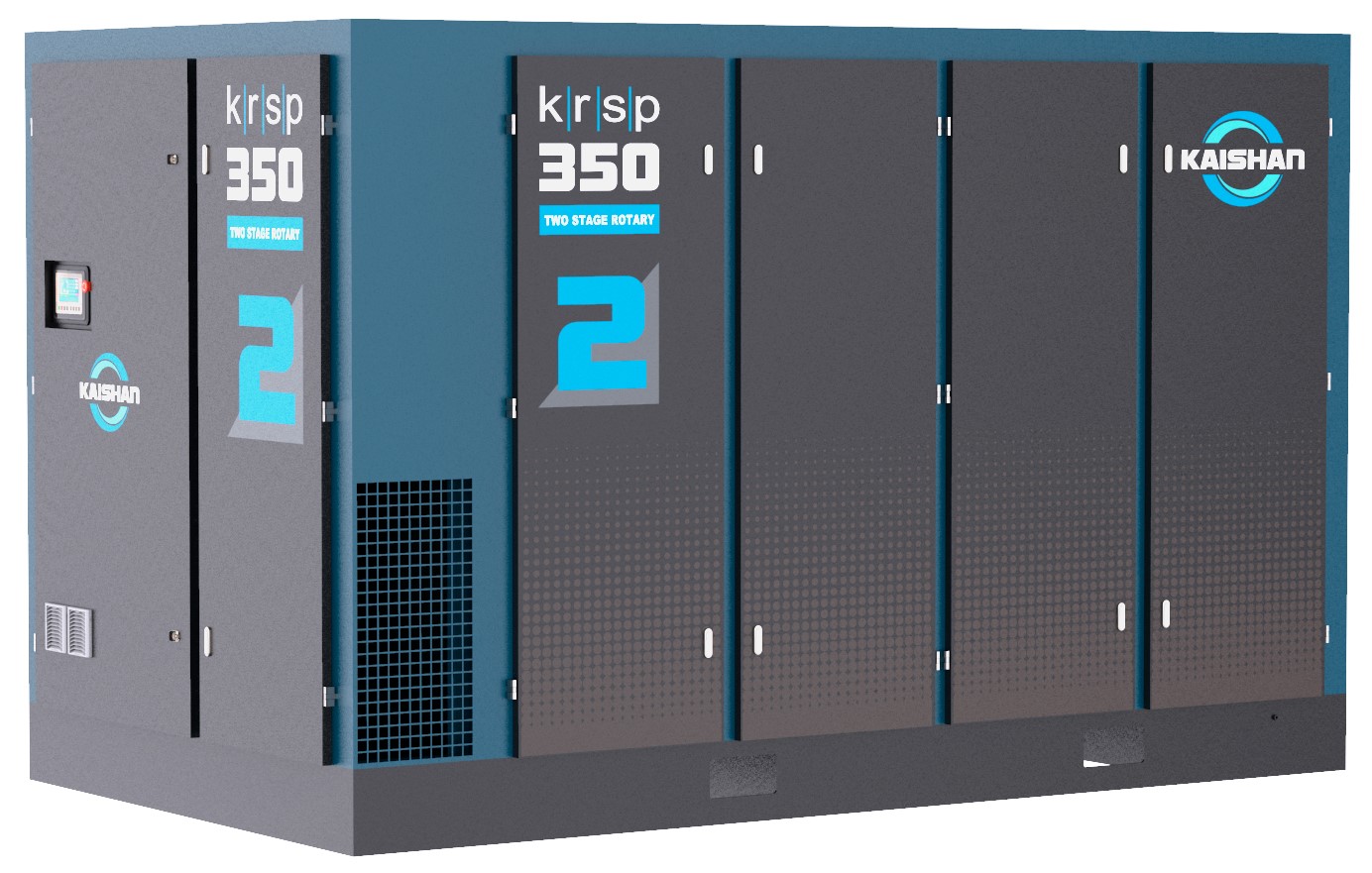
Kaishan’s KRSP2 two-stage rotary screw air compressor is one of the most energy-efficient machines on the market.
And they are backed by the industry’s best warranties—Kaishan’s KRSP and KRSP2 screw compressors are backed by a lifetime warranty on the airend.

An unmatched lifetime airend warranty backs Kaishan’s KRSP and KRSP2 screw compressors.
For more details on the different types of compressors, read our blog post, “What Kind of Air Compressor Do I Need?”
Unfortunately, you need to know more than just the differences between the types of compressors to select the right one for your operation. There’s the configuration of your system. The compressor room layout. And other equipment like storage tanks and dryers. One of the most critical decisions, however, is sizing your compressor appropriately.
Size Your Compressor Properly
As we pointed out in our blog post, “Top Air Compressor Problems and How to Troubleshoot Them,” the most severe air compressor problems come from mistakes in sizing or application. Be careful not to oversize your system, trying to add more “muscle” to your system or anticipate future needs. It may seem counterintuitive, but with rotary screw air compressors, “too much” is almost as bad as “not enough.”
Here’s why. Rotary screw air compressors are designed for a 100% duty cycle. Run them significantly less than that, and you’ll waste electricity.
Oversizing is the leading cause of rapid cycling, which occurs when your compressor turns on and off constantly and causes equipment failures and downtime. For more information on the topic, read our blog post, “Everything You Need to Know About Sizing Industrial Air Compressors for Manufacturing.”
Configure Your System Properly
We often encourage customers to deploy at least three compressors, including:
- A base load compressor to meet your system’s minimum compressed air load.
- A trim compressor to handle fluctuations in demand above the base unit.
- A backup compressor on standby if a base or trim unit goes offline.
Unfortunately, there’s no cookie-cutter solution to designing and deploying an industrial air compressor system. And your decisions can make a big difference in the success and profitability of your operation. The best place to start is with your local compressed air professional. They can help you evaluate your compressed air needs and configure your system for optimum performance, reliability and efficiency.
For more information on system configuration, read our blog post, “Everything You Need to Know About Sizing Industrial Air Compressors for Manufacturing.”
Maintain Your Compressor
To keep your air compressor running reliably and efficiently, you must take air compressor maintenance seriously. Industry research has proven that a proactive maintenance strategy can help you reduce maintenance costs by as much as 70%.
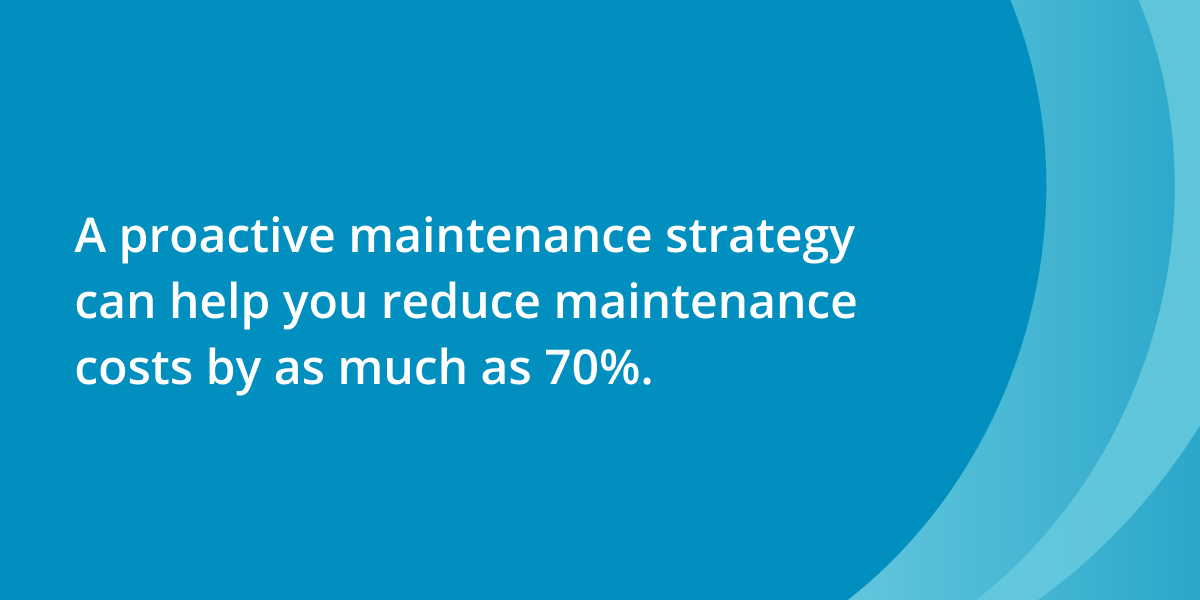
One of the critical elements of maintenance is adjusting service intervals to allow for a more challenging environment. In a cement plant, for example, the dust and dirt quickly build up in air and oil filters, so you will want to change them more often. And, while a manufacturer might say that the compressor oil needs to be changed every 8,000 hours, you may want to cut that time in half in a setting like metallurgy, since the harsh, high-temperature environment will cause oil to degrade more rapidly.

If you’re working in a high-temperature environment like a metal-working plant, you’ll want to change compressor oil more frequently.
Most facilities have maintenance staff members who can perform routine tasks, such as changing oil and filters, cleaning traps and drains, sending out oil samples and repairing leaks. However, more serious issues may require more advanced knowledge about compressed air technology.
That’s why having a relationship with an air compressor maintenance professional is so important. We strongly advise companies to seek outside help when issues arise to avoid serious problems and bring in a professional anytime you see a drop in performance that you can’t explain.
For more detail, read our post, “Ten Need-To-Know Rotary Screw Air Compressor Maintenance Tips.”
The Mule and the Thoroughbred A VSD Parable
Mules are workhorses. Not very glamorous, but they get the job done. Thoroughbreds go a lot faster. But they are notoriously high maintenance.
If you’re thinking of buying a VSD air compressor, think about it in thoroughbred terms. To explain why that’s true, we need to provide a little background.
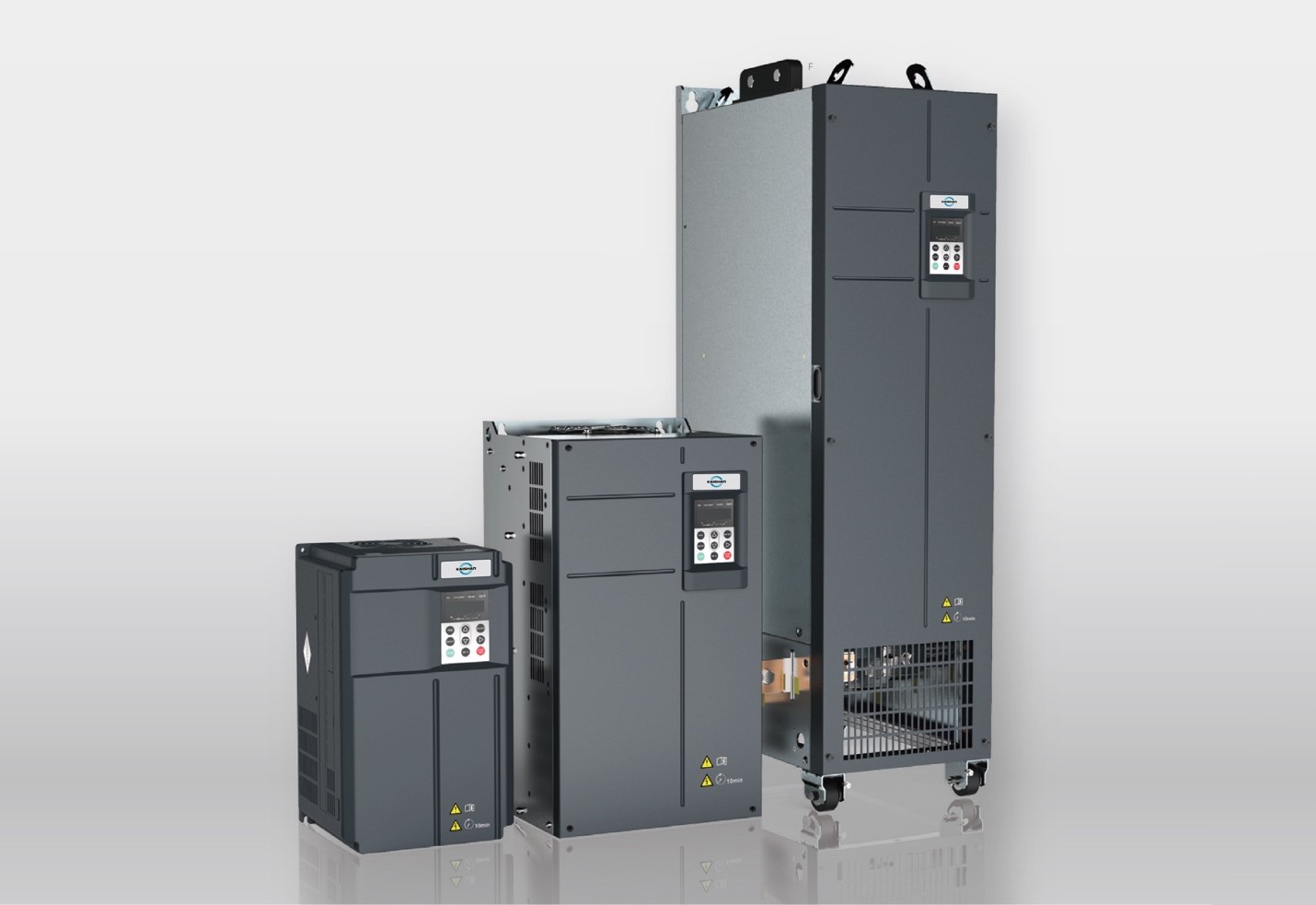
Variable-speed drives, like those newly offered by Kaishan USA, allow rotary screw air compressors to operate more efficiently at part-load conditions. But they’re not for everyone.
Variable-speed drives are becoming more common, especially with state governments and utilities offering rebates to companies that install them. VSDs allow rotary screw compressors to operate more efficiently at part-load conditions. They are almost tailor-made for rotary screw air compressors, which can easily change speeds.
However, a VSD air compressor will not benefit every company. We do not recommend using VSDs when your compressor runs at 100% load most of the time since the drive itself incurs some losses. We also encourage customers not to use a VSD compressor when the machine runs at 20% of its total capacity most of the time. It will run too cold and build up moisture, ruining the machine and causing excess oil carryover. In addition, VSDs require cleaner and cooler environments than a fixed speed rotary screw.
The bottom line? VSD technology can actually cost you money if it is not applied appropriately. How? A VSD air compressor has a higher initial cost than a fixed-speed compressor. Plus, frequent breakdowns all too often occur when a VSD compressor is not the right choice for the application.
As a result, we’ve become strong advocates for applying VSD technology everywhere that’s appropriate. And more importantly, we’re totally against misapplying VSDs.
For a complete discussion on how and when to apply VSDs, read our blog post, “How Variable-Speed Drive (VSD) Rotary Screw Air Compressors Save You Money.”
Get to the Quick Wins Faster by Consulting a Pro
You’ll get to the quick wins faster and save a lot more energy (and money) if you begin your energy efficiency efforts with the help of your local compressed air consultant. Whether you need to fix leaks, choose the right compressor, size it, configure your system or maintain it, your local professional has the experience to help you identify the quick wins for your particular facility. And help you decide if VSD technology will work for you.
Kaishan USA works with a nationwide network of independent distributors, who can provide on-site help and guidance as needed. These factory-trained air compression experts can also service your air compressor system without a problem. They also have staff members who are skilled in advanced technologies, such as ultrasonic leak detection.
Key Takeaways
- Compressed air systems can be a significant source of energy savings for most companies.
- Five quick wins for compressed air energy efficiency include fixing leaks, choosing the right compressor, sizing it, configuring your system and maintaining it.
- We’re strong advocates for applying VSD technology everywhere that’s appropriate, but we’re totally against misapplying VSDs.
- The best way to score those five quick wins is by starting with your local compressed air consultant.
Let Us Help
Because compressed air is such a large energy user, boosting the energy efficiency of your system can help you optimize the operation of your facility and even allow you to build competitive advantage. If you need help identifying ways to improve the energy efficiency of your compressed air system, get in touch with the experts at Kaishan. Contact us today.
Random stat or
customer quote
textXXtext
text

